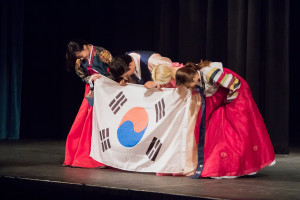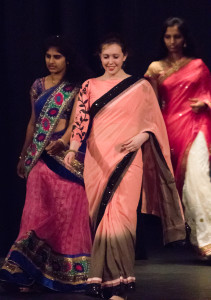By SHELBY BILBRUCK
Columnist
I love American fashion. Jeans, leather jackets, cut offs, tank tops and all the plaid a person could ask for. However, after last week’s culture night, I learned I love fashion from every corner of the world.
While we’re used to seeing American fashion as being fun and expressive, other countries from Nepal to Mexico have clothing that represents and expresses their culture and their identity.
Take South Korea for instance. While traditional clothing for us may be jeans and a blouse, traditional outfits for Korea are called hanbok.
Hanbok consists of a top and bottom. Men wear a jacket called a jeogori and pants called baji, while women wear a skirt called a chima.
The designs of the hanbok are simple, yet elegant, and are primarily worn today on special occasions like weddings or holidays.
Indians, on the other hand, wear bright and colorful colors on their garments, like silk saris for the women.
The traditional clothing for Indian men is called the dhoti. A dhoti is unstitched cloth that gets tied around the men’s waist and legs. They also wear kurtas, like a loose shirt, and sherwanis, a long coat buttoned up from the knees to the collar, for special occasions.
A more toned down traditional outfit comes from Russia. Men wear kosovorotkas, a traditional Russian long-sleeved shirt that reaches to a man’s mid-thigh.
Russian women sometimes wear sarafans, which are long, trapeze-shaped jumper dresses. They were worn well into the 20th century but are used today to perform Russian folk dancing and songs.
Some countries wear western clothing, but add touches from their own culture to it. In Kenya, for example, women wear skirts and blouses accompanied by a khanga.
A khanga is a piece of cloth they wrap around their body that is covered in beautiful prints.
They still wear traditional clothing though, such as the kitenge. This is a cotton dress that is heavily tie-dyed and embroidered and is usually worn at ceremonies.
Students from other countries like Mexico, Kyrgyzstan, Taiwan and more showcased their traditional wear at culture night and showed how beautiful their clothing is!





Leave a Reply